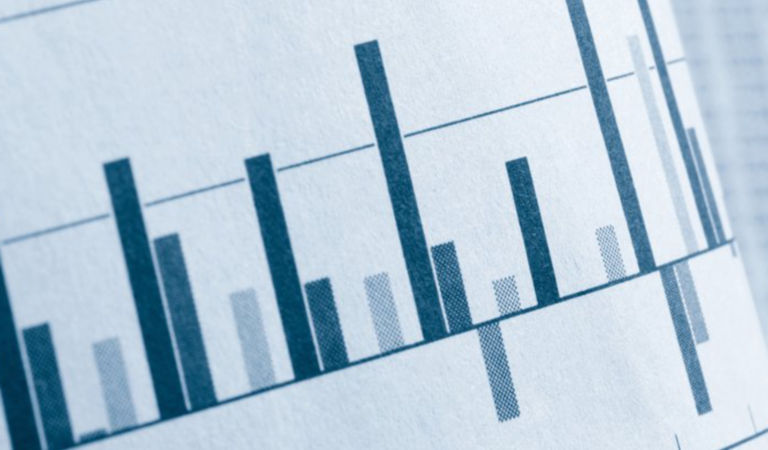Equities
Global equities (-1.9%) declined over the month, ending February with a 4.5% gain year to date. Economic growth, consumer spending, and labor markets were surprisingly resilient against a backdrop of seismic changes in the global economy, including sweeping sanctions against Russia, a reshaping of global energy flows, and sharply higher inflation and borrowing costs. Higher-than-expected core inflation in the US and Europe and few signs of a near-term slowdown in US economic activity led markets to reassess their expectations for peak interest rates. Most global central banks continued to tighten monetary policy to temper inflation, with the European Central Bank (ECB), the Bank of England (BOE), and the US Federal Reserve (Fed) announcing rate hikes in line with expectations. European economies benefited from lower natural gas prices, which tumbled to their lowest level since September 2021 amid ample storage, mild weather, and lower demand. China’s post-pandemic economic recovery rapidly gained momentum as the country’s Consumer Price Index (CPI) accelerated 2.1% year over year in January, from 1.8% in December, due to a pickup in food prices and a surge in spending over the Lunar New Year holiday.
US
US equities (-2.4%) ebbed lower following outsized gains in January. Investors grew more cautious on stocks after firmer-than-expected inflation and robust growth in consumer spending and hiring increased the likelihood that the Fed will raise interest rates higher than previously anticipated. Optimism for a swift decline in inflation was dented after data revealed that inflation moderated at a slower pace in January. Core CPI eased slightly, rising 5.6% from a year earlier, while the Fed’s preferred inflation gauge — the Personal Consumption Expenditures Price Index — increased 4.7% at the core level, markedly higher than the consensus estimate of 4.3%. The Producer Price Index lifted 0.7% in January, the largest increase in seven months and above expectations for a 0.4% gain. Meanwhile, the strong job market, state tax cuts, and cost-of-living adjustments for retirees boosted consumers’ disposable income and fortified spending, exacerbating inflation fears. In response, markets recalibrated their interest-rate expectations higher, with futures markets pricing a terminal rate of about 5.4% by the Fed’s July meeting, with no rate cuts anticipated in 2023. Of the 94% of companies in the S&P 500 Index that had reported fourth-quarter earnings, the blended year-over-year earnings decline for the index was 4.9%, worse than expectations of a 3.3% decrease and significantly below the 10-year average earnings growth rate of 8.9%. The forward 12-month price-to-earnings ratio stood at 17.7.
Economic data released in February showed surprising vigor in the US economy. The labor market was particularly robust in January, although seasonal factors appeared to amplify job growth. Nonfarm payrolls vastly exceeded estimates, surging by 517,000, and upward revisions to job gains in the prior two months suggested that the economy started the year with more momentum than previously thought. The unemployment rate unexpectedly dipped to 3.4% — the lowest since 1969 — and initial jobless claims remained below the pre-pandemic level in 2019. Average hourly earnings growth moderated to 4.4% year over year. After two straight monthly declines, headline retail sales soared 3.0% in January — the largest gain in nearly two years — while consumer spending jumped by a greater-than-expected 1.8%, driven in part by a sizable increase in household income after wage hikes and annual raises took effect in January. Nevertheless, the Conference Board’s Consumer Confidence Index surprisingly fell to 102.9 in February amid a weaker short-term outlook for income, business, and labor market conditions, which could weigh on spending in the months ahead. Housing market data was mixed in January as pending and new-home sales rose, while existing-home sales declined for the twelfth successive month. In February, the average 30-year mortgage rate spiked to its highest level since November, driving mortgage demand down to a 28-year low.
The manufacturing sector appeared to stabilize in February; the Institute of Supply Management (ISM) Manufacturing Index lifted slightly to 47.7 but remained in contractionary territory for the fourth consecutive month. The services sector improved much more than anticipated in January, with the ISM Services Index climbing six points to 55.2, driven by a rebound in business activity and new orders. A separate preliminary survey from S&P Global indicated that services sector output rose for the first time since June 2022, although the pace of growth was only marginal. The National Federation of Independent Businesses (NFIB) Small Business Optimism Index improved slightly in January but remained close to its lowest level since 2013. Notably, the share of companies that raised prices was the smallest since May 2021, suggesting a gradual tempering of inflation pressures.
Ten of the 11 sectors in the S&P 500 Index (-2.4%) posted negative results. Energy (-7.1%) was the worst-performing sector during the period. Real estate (-5.9%) and utilities (-5.9%) were notable underperformers. Communication services (-4.7%) declined, led lower by diversified telecommunication services (-7.3%) and entertainment (-7.0%). Health care (-4.7%) fell, as health care providers & services (-5.6%) and pharmaceuticals (-5.3%) weighed down the sector. Information technology (+0.4%) rose, most notably semiconductors & semiconductor equipment (+4.2%). Industrials (-0.9%) outperformed the index, aided by the trading companies and distributors (+7.5%) group.
Europe
European equities (+1.4%) continued to trend higher, making Europe one of the top-performing equity markets year to date. Upbeat macroeconomic data and lower natural gas prices supported the view that the UK and European Union (EU) could experience a milder economic slowdown than previously expected. The ECB raised interest rates by 50 basis points (bps) and signaled at least one more hike of the same magnitude in March, which prompted markets to speculate that the tightening cycle would end soon. Eurozone headline CPI inflation eased to 8.6% year over year in January, from 9.2% in December; however, core inflation accelerated to 5.3%, from 5.2%, indicating persistent upward price pressures, particularly in the services sector. European economies benefited from lower natural gas prices, which tumbled to their lowest level since September 2021 amid ample storage, mild weather, and lower demand. Thus far, fourth-quarter corporate earnings were better than feared, with earnings anticipated to increase 13.6% from a year earlier.
The trend of improving macroeconomic data suggests that Europe’s economy is weathering the stress of higher interest rates. The eurozone Manufacturing Purchasing Managers’ Index (PMI) stabilized at 48.5, ending an eight-month sequence of contracting output. Easing supply bottlenecks and improved availability of raw materials lessened the strains on production, while weak demand weighed on output and helped to reduce inflationary pressures. The preliminary eurozone Composite PMI for February showed that the services sector accelerated to an eight-month high. Notably, average input costs rose steeply, signaling persistent inflation pressures in the sector. Eurozone consumer confidence in February brightened for the fifth consecutive month, while industry confidence lost some momentum despite broadly stable assessments for orders and finished inventory.
In Germany (+0.6%), a sharp rise in the ZEW Indicator of Investment Sentiment signaled more optimistic views on the country’s economy over the next six months, and the Ifo Business Climate Index indicated that German business morale improved in January. In the UK (+1.9%), the preliminary Composite PMI showed that manufacturing and services activity rebounded at a surprisingly strong pace in February after six months of declining output, while consumer confidence rose to its highest level in almost a year, according to GfK. Prime Minister Rishi Sunak announced a new deal with the EU on post-Brexit trading arrangements for Northern Ireland to reduce the impact of the trade border in the Irish Sea. In France (+2.3%) and Italy (+3.0%), stronger-than-expected inflation drove up European governments’ borrowing costs and generated more uncertainty about the path of ECB policy.
Pacific Basin
Pacific Basin equities (-0.8%) ended the month lower. In Australia (-2.4%), the Reserve Bank of Australia (RBA) raised interest rates by 25 bps, to 3.35% — the highest level since September 2012 — and shattered expectations of a near-term pause in policy tightening. The bank upgraded its forecasts for wages, economic growth, and core inflation, predicting that trimmed mean inflation (a closely monitored measure of core inflation) will only slow to 6.25% in June, notably higher than its previous forecast of 5.5%. Investors narrowed the odds of a recession and priced in four more rate hikes, one more than is currently expected for the Fed. The job market remained very tight in January, although an unexpected rise in the unemployment rate to 3.7% and a second straight monthly decline in the number of jobs suggested that the labor market is starting to weaken in response to higher interest rates. Australian consumer confidence dipped to near historic lows amid a significant drop in current assessments of finances and a weaker 12-month economic outlook. In contrast, business confidence lifted from depressed levels, bolstered by fewer concerns about global economic growth.
Hong Kong’s (-7.0%) economy contracted more than expected in 2022 against a backdrop of slowing global and domestic demand, rising interest rates, and a prolonged exit from COVID lockdowns. GDP fell 4.2% year over year in the fourth quarter and 3.5% for the full year, although the economic outlook for 2023 brightened amid China’s anticipated economic recovery and a rebound in tourism.
In Japan (+0.7%) nominal wages rose 4.8% year over year in December, the fastest pace since 1997 and far above estimates of 2.5%. Spring wage negotiations remain critical to the trajectory of imminent monetary policy tightening, and Prime Minister Fumio Kishida continued to press for pay hikes. Markedly strong wage gains bolstered expectations that the Bank of Japan (BOJ) will tighten its policy settings after Governor Haruhiko Kuroda steps down in April, although his likely replacement, Kazuo Ueda, faces a difficult task of balancing lackluster economic growth against rising inflation. Core CPI accelerated to a four-decade high of 4.2% in January, from 4.0% a month earlier. Fourth-quarter GDP expanded at an annualized pace of 0.6%, rebounding from a 1.0% contraction in the third quarter but well below expectations of a 2.0% gain, underscoring the economy’s need for policy support. Details of the report showed that businesses cut spending more than forecast and private consumption recovered despite headwinds from the cost-of-living strains. Other macroeconomic data was mixed. Domestic demand remained solid as retail sales climbed at a stronger-than-anticipated pace of 6.5% year over year in January, the eleventh straight monthly increase. However, a 4.6% drop in industrial production in January was much worse than expectations for a 2.6% decline, while Japan’s trade deficit surged to a record-high ¥3.5 trillion (US$26.1 billion) amid weak exports due to a slowing global economy.
Emerging Markets
Emerging markets (EM) equities (-4.6%) declined as sentiment for riskier assets waned amid strength in the US dollar, geopolitical tensions, and anxiety about US interest rates. Within EM, Europe, the Middle East, and Africa (EMEA) outperformed Asia and Latin America.
EMEA equities (-2.6%) slid. The Czech Republic (+10.4%) surged as markets anticipated no further policy tightening and potential rate cuts later in 2023. The central bank left interest rates unchanged, indicating that a strong currency is helping to contain high inflation. Turkey (+6.1%) rallied after the government unveiled measures to support equities following a devastating earthquake, including incentives for share buybacks and a higher mandated allocation to stocks in pension plans. In South Africa (-3.2%), President Cyril Ramaphosa declared a national state of disaster in an effort to secure government funds to alleviate the escalating energy crisis. The increasing frequency of rolling blackouts severely impacted the country, with the International Monetary Fund warned that GDP growth this year could be cut in half, to only 1.2%.
Asian equities (-4.9%) were led lower by China (-9.9%), where stocks retreated after a powerful rally from October’s lows. Markets parsed heightened geopolitical tensions with the US and scrutinized economic data and policy signals ahead of the National People’s Congress annual session in March, when the government will outline key policy goals and growth targets for the economy. China enjoyed a rapid rebound in economic activity, with the official manufacturing PMI rising to 52.6 in February — its highest level since April 2012 — and the nonmanufacturing PMI improving to 56.3, from 54.4 in January. Chinese home prices stabilized in January following 16 straight months of declines. Other economic data was less favorable; in January, car sales plunged 38% and home sales dropped 40%, contributing to uncertainty about the deployment of consumers’ accumulated savings, which is critical to the country’s recovery. South Korea (-0.1%) finished flat, with the Ministry of Finance admitting that persistently high inflation, slumping exports, and deteriorating business sentiment indicate that the economic downturn is likely to continue. The central bank left interest rates unchanged, snapping a streak of seven consecutive rate hikes, amid mounting concerns about the health of the economy. In India (-3.7%), the government unveiled a business-friendly budget, pledging to cut taxes and raise capital spending 33%, to US$122 billion, to boost infrastructure and promote job creation.
Latin American equities (-5.2%) declined. Brazil (-6.9%) fell sharply, with the central bank and President Luiz Inácio Lula da Silva struggling to align their views on interest rates and the bank’s inflation target. The president rattled markets after he criticized the central bank’s president and questioned whether the bank should remain independent. In Mexico (-2.7%), equity prices were supported by stronger-than-anticipated fourth-quarter GDP growth and below-forecast inflation. Colombia (-12.7%) plunged, with President Gustavo Petro calling on citizens to rise up against the “elites” as he looks to garner support for plans to expand the government’s role in pensions, health care, and the labor market.
Fixed Income
Expectations for “higher for longer” Fed policy rates as a result of persistent high inflation and a tight labor market weighed heavily on fixed income markets. The excess return performance of fixed income sectors was mixed amid the challenging market backdrop.
US economic data releases were largely upbeat, notably in the labor market, where nonfarm payrolls surged and the unemployment rate declined to a 53-year low. Personal spending and income increased, although only spending outpaced consensus expectations. According to the University of Michigan, improvements in current conditions lifted consumer confidence, offsetting a drop in the expectations component. The NFIB Small Business Optimism Index inched higher; businesses cited inflation as the main ongoing concern. The trade deficit widened as imports increased and exports declined amid slowing global demand. Wholesale inventories recorded their slowest gain in over two years as higher interest rates hampered new orders. Housing starts and building permits were lower than expected, with weakness attributed to single-family construction and the more volatile multi-family component. In Europe, eurozone consumer confidence improved to its highest level in over a year, and fourth-quarter GDP slightly expanded, in line with expectations. In Germany, the ZEW survey showed that expectations improved, while industrial production was dragged down by a decline in output in energy-intensive sectors. In the UK, inflation slowed more than expected, GDP growth was flat in the fourth quarter, and the composite PMI rose into expansionary territory. Japan’s economic growth trailed estimates in the fourth quarter on lower business spending and the unwinding of stimulus programs. The Canadian unemployment rate held steady, near a record-low level. In Australia, the unemployment rate rose more than anticipated and the participation rate dipped slightly.
The Fed hiked interest rates by 25 bps, and Chair Jerome Powell conveyed limited concern about the recent tightening of financial conditions. The ECB raised rates by 50 bps, signaling the same-sized increase in March. A dovish statement by the BOE accompanied a 50 bps increase in rates. Sweden’s Riksbank delivered a hawkish 50 bps hike and stated concern about currency weakness. Kazuo Ueda was nominated as the Bank of Japan governor. The EU and UK announced an agreement over the Northern Ireland Protocol.
Most global sovereign yields rose sharply on the prospect of stickier inflation and more rate hikes. US Fed members, including Chair Powell, pushed a “higher for longer” narrative on interest rates following the release of strong US economic data. There was a hawkish market repricing for the peak federal funds rate, as market expectations moved above the Fed’s December dot plot projection. Australian yields rose, even as signs of a loosening labor market cast doubt on the hawkish RBA narrative. The Bank of Canada’s governor made dovish statements, although employment and wage growth data were strong. The BOJ’s governor nominee Ueda stuck to the current policy narrative and mentioned a potential shortening of the yield curve control maturity band. The Bloomberg TIPS index delivered a total return of -1.37%, and the 10-year breakeven inflation rate increased by 13 bps to 2.38% during the month.
Global credit bonds underperformed duration-equivalent government bonds as spreads widened. Within the securitized sectors, agency mortgage-backed securities, commercial mortgage-backed securities, and asset-backed securities outperformed duration-equivalent government bonds. Within EM, local markets debt (-3.16%) underperformed external debt (-2.21%), in US-dollar terms. Widening spreads hurt results within external debt, and an increase in US Treasury yields also had a negative impact. A depreciation in EM currencies drove negative performance in local markets, and movement in EM rates also detracted from results.
Currencies
The US dollar rallied versus most major currencies, supported by robust US economic data and a hawkish market repricing for the peak federal funds rate. The Australian dollar and the New Zealand dollar were among the largest decliners, as strong US labor market data recalibrated market expectations for a more hawkish Fed. In the G10, the Swedish krone outperformed amid higher-than-expected inflation and the central bank’s hawkish rhetoric. The Japanese yen declined as hopes of an imminent BOJ policy shift faded after the bank’s nominated governor largely stuck to the current policy narrative. Most EM currencies fell versus the US dollar, with concerns of a hawkish Fed outweighing positive sentiment on China’s reopening. The South Korean won, South African rand, and Colombian peso were the primary decliners. The Mexican peso was a notable exception.
Commodities
Commodities (-3.8%) were lower for the fourth straight month, with all four commodity sectors stumbling on uncertainty about the macroeconomic outlook, the trajectory of China’s economic recovery, and the future path of monetary policy. Energy (-3.2%) declined for the fourth consecutive month. US natural gas (-0.6%) ebbed as domestic inventories continued to trend above their five-year average, and milder weather was forecast for the East Coast. Crude oil (-1.9%) declined, with investors weighing an uncertain demand outlook amid tightening US monetary policy and China’s economic recovery. Gasoline (-4.1%) and gas oil (-6.9%) fell sharply after market sentiment was dented by a surge in Russian exports to Asia and lingering concerns about recession. Heating oil (-9.3%) plunged on signs of weak consumer demand and a big increase in supplies.
Industrial metals (-7.8%) registered negative returns for the first time since September 2022, as the base metals complex declined after strong US economic data suggested that the Fed would need to stay hawkish to cool the world’s largest economy. Lead (-1.4%) and copper (-2.5%) were weighed down by the prospect that US interest rates will be higher for longer. Aluminum (-10.7%) tumbled as a series of large inflows into London Metal Exchange warehouses highlighted ample supplies. Zinc (-11.1%) and nickel (-18.3%) plunged following hawkish signals from the Fed, as well as some signs of weak near-term Chinese demand.
Precious metals (-5.9%) fell for the first time since October 2022, with gold (-5.2%) and silver (-12.1%) slumping after a slew of strong economic data drove the US dollar and yields higher and prompted markets to anticipate a higher peak in US interest rates.
Agriculture & livestock (-3.1%) ended the month lower. Cocoa (+6.9%) advanced on reports that exporters in the world’s top-producing nation, the Ivory Coast, were close to defaulting on their contracts due to a lack of beans from the main harvest. Coffee (+2.9%) rose, primarily driven by concerns over soaring prices in the physical markets in top producers Brazil and Colombia. Feeder cattle (+2.9%) and live cattle (+1.9%) moved higher after the annual cattle inventory report highlighted the lowest beef cow numbers since 1962 and the lowest total cattle herd in eight years. Sugar (-0.9%) slipped as strong production in Thailand and favorable weather conditions in Brazil outweighed concerns about lower crop yields in India; higher gasoline prices in Brazil supported demand for ethanol; and appreciation in the Brazilian real bolstered prices. Lean hogs (-1.1%) were weighed down by supply concerns, which continued to pressure hog markets. Cotton (-2.7%) fell amid a surplus of US cotton and slowing global demand. Soybeans (-3.1%) slumped on reports of a record crop in top grower Brazil. Corn (-6.7%) declined, as indications of a good Brazilian crop helped compensate for lower production in Argentina due to drought. Wheat (-7.5%) registered its longest run of monthly losses in two decades due to strong Russian exports, shipments from Ukraine through a safe corridor, and improved prospects for US crops.












Monthly Market Snapshot — February 2024
A monthly update on equity, fixed income, currency, and commodity markets.
By
Brett Hinds
Jameson Dunn